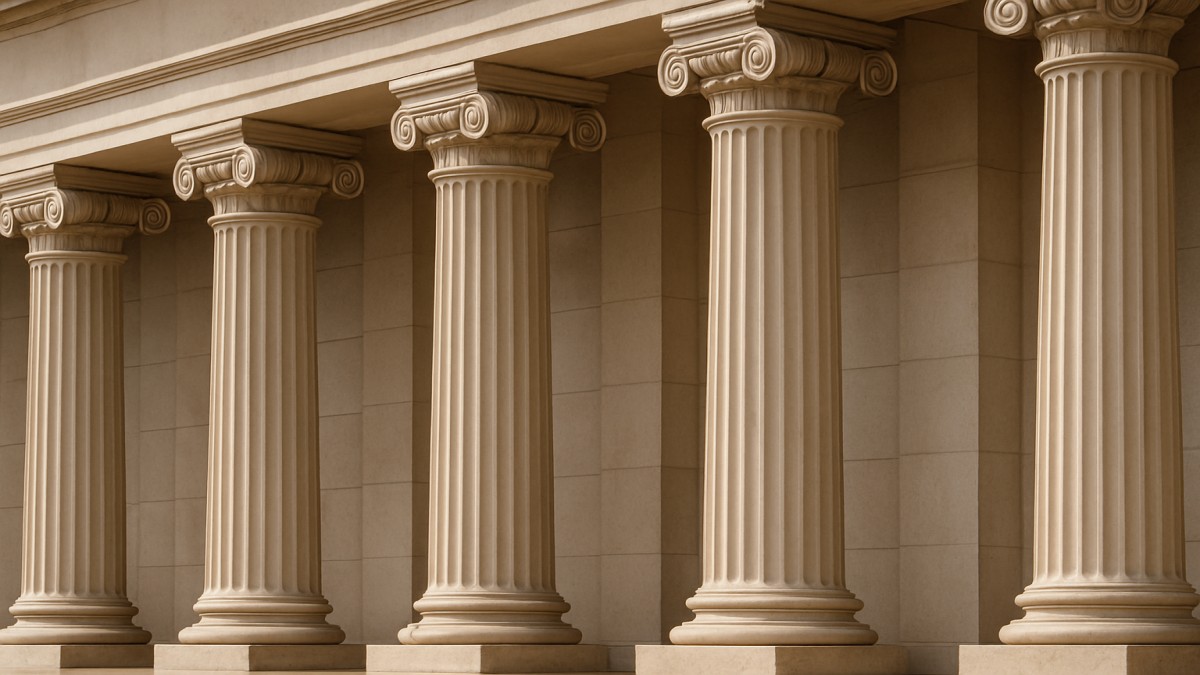others
Pilasters – History, Design, and Modern Applications

Introduction to Pilasters
What is a Pilaster?
A pilaster is a shallow, vertical architectural element resembling a flat column that projects slightly from a wall. Unlike freestanding columns, pilasters are often integrated into the wall’s surface and can be purely decorative or structural. They usually include the same components as a column—base, shaft, and capital—but serve a different purpose in design.
Pilasters vs Columns – Key Differences
While both share similar forms, columns are typically round and freestanding, supporting substantial loads. Pilasters are rectangular or square in cross-section and generally attached to walls. They may bear some load but often serve a visual framing role rather than primary structural support.
Historical Background
Origins in Ancient Architecture
Pilasters originated in ancient Greek and Roman architecture as a way to mimic the look of full columns while using less material. They were especially common in large public buildings and temples.
Use in Greek and Roman Structures
Romans perfected pilaster use in monumental architecture, often pairing them with arches and decorative friezes. Famous examples can be seen in structures like the Colosseum.
Pilasters in Renaissance and Baroque Architecture
During the Renaissance, architects revived classical design principles, and pilasters became a common façade element. The Baroque era pushed pilaster ornamentation further with dramatic carvings and intricate moldings.
Types of Pilasters
Engaged Pilasters
Directly connected to walls, they create the illusion of a supporting column while remaining part of the wall’s structure.
Decorative Pilasters
Used purely for aesthetic purposes, often in interior spaces, to break up wall surfaces or frame doorways.
Structural Pilasters
Provide actual support by reinforcing walls—common in older masonry construction.
Corner Pilasters
Placed at the edges of buildings, these enhance symmetry and visual appeal.
Design Elements
Capitals and Bases
Like columns, pilasters feature capitals (top sections) and bases (bottom sections) that follow classical orders—Doric, Ionic, or Corinthian.
Shafts and Proportions
The shaft is the vertical part of the pilaster, which can be smooth or fluted. Proportions are often based on classical architectural rules to maintain balance.
Materials Used – Stone, Brick, Wood, and Modern Alternatives
Historically crafted from stone or brick, pilasters today can also be made from concrete, fiberglass, or composite materials for cost efficiency and easier installation.
Finishes and Ornamentation
Finishes range from smooth plaster to intricate carvings, moldings, or paint effects that imitate stone.
Functions of Pilasters
Structural Support
Some pilasters help bear loads, especially in older brickwork or stone masonry.
Decorative Enhancement
Pilasters add depth and rhythm to otherwise flat surfaces, creating elegance and architectural interest.
Framing Architectural Features
Commonly used to frame doors, windows, fireplaces, and archways.
Pilasters in Different Architectural Styles
Classical Style
Rooted in Greek and Roman traditions, using proportions and decorative orders.
Gothic Style
More vertical and slender, often adorned with elaborate carvings.
Neoclassical Style
Emphasizes clean lines and symmetry, popular in 18th and 19th-century public buildings.
Modern and Contemporary Use
Often minimalistic, with smooth surfaces and clean geometric lines.
How to Incorporate Pilasters in Modern Construction
Residential Applications
- Framing entryways to give a stately appearance.
- Adding interest to interior walls or fireplace surrounds.
Commercial and Institutional Buildings
- Enhancing façades for hotels, banks, or civic buildings.
- Providing architectural identity without heavy construction costs.
Interior Design with Pilasters
Pilasters can be used indoors as subtle dividers or to emphasize verticality in a space.
Maintenance and Preservation
Cleaning and Repairing
Stone and concrete pilasters require periodic cleaning to prevent staining. Damaged sections may need patching or replacement.
Preserving Historical Pilasters
Special care is taken in heritage buildings to restore pilasters using original materials and techniques.
Replacing Damaged Pilasters
Modern replicas can be produced from lightweight composites, reducing installation challenges.
Conclusion
From ancient temples to modern homes, pilasters have stood the test of time as both functional and decorative architectural features. Whether they’re providing structural reinforcement or simply adding a touch of elegance, pilasters remain a versatile design element that blends history with contemporary style.
FAQs
1. Are pilasters purely decorative?
Not always—some pilasters are structural, especially in older masonry buildings.
2. Can pilasters be load-bearing?
Yes, structural pilasters can help support walls, though many modern versions are decorative.
3. What’s the difference between a pilaster and a column?
Columns are freestanding and typically round, while pilasters are attached to walls and often rectangular.
4. Do modern homes use pilasters?
Yes, especially for entryways, interior décor, and fireplace surrounds.
5. How much do pilasters cost to install?
Prices vary by material, size, and design complexity, ranging from affordable fiberglass units to high-end custom stonework.

 entertainment2 months ago
entertainment2 months agoOnionFlix: Everything You Need to Know About This Streaming Website

 others1 day ago
others1 day agoNook vs Kindle: Which E-Reader Is Right for You?

 education4 weeks ago
education4 weeks agoHow to Become a Software Engineer: A Complete Guide

 gaming2 months ago
gaming2 months agoMelisandre: The Enigmatic Priestess of Game of Thrones

















